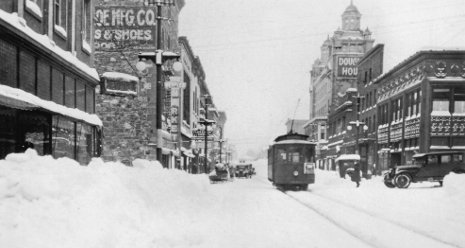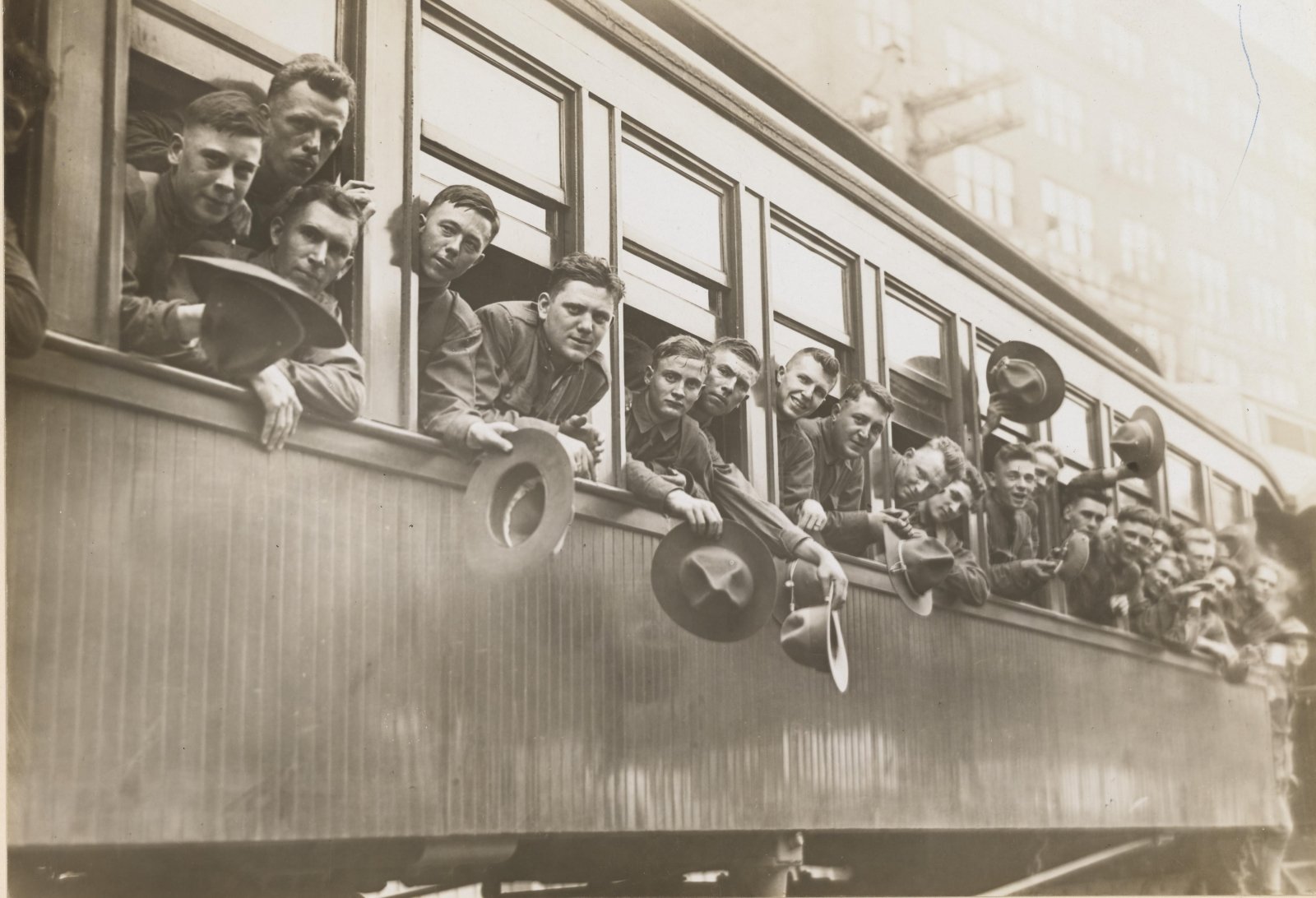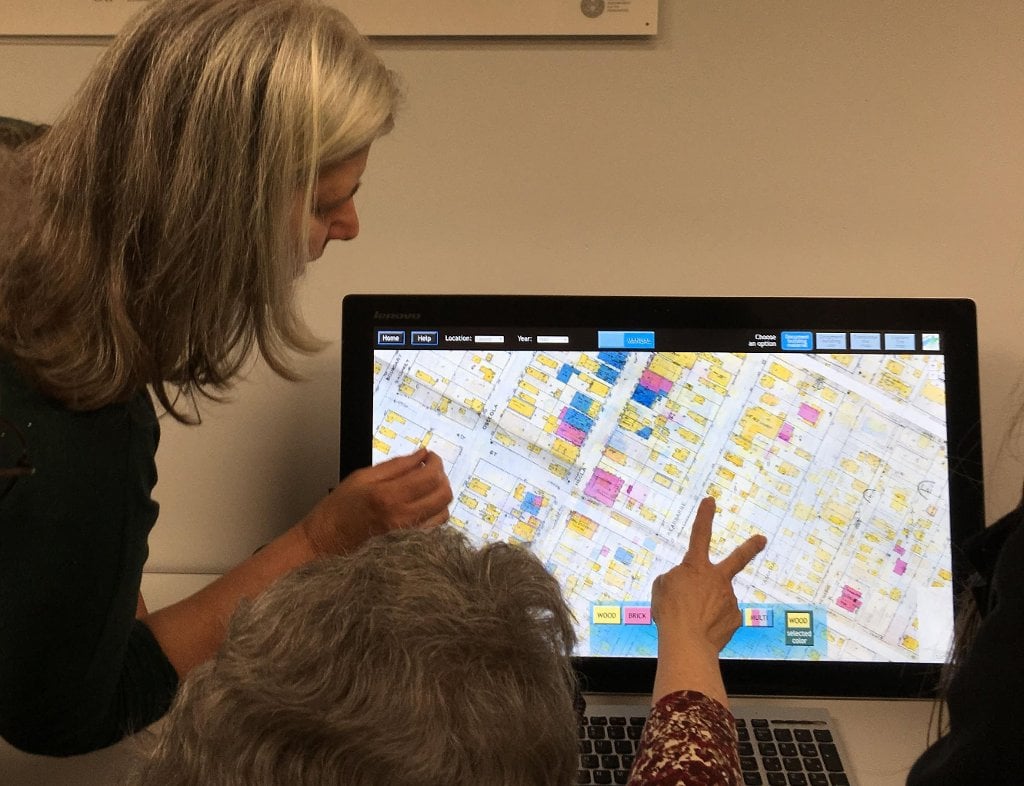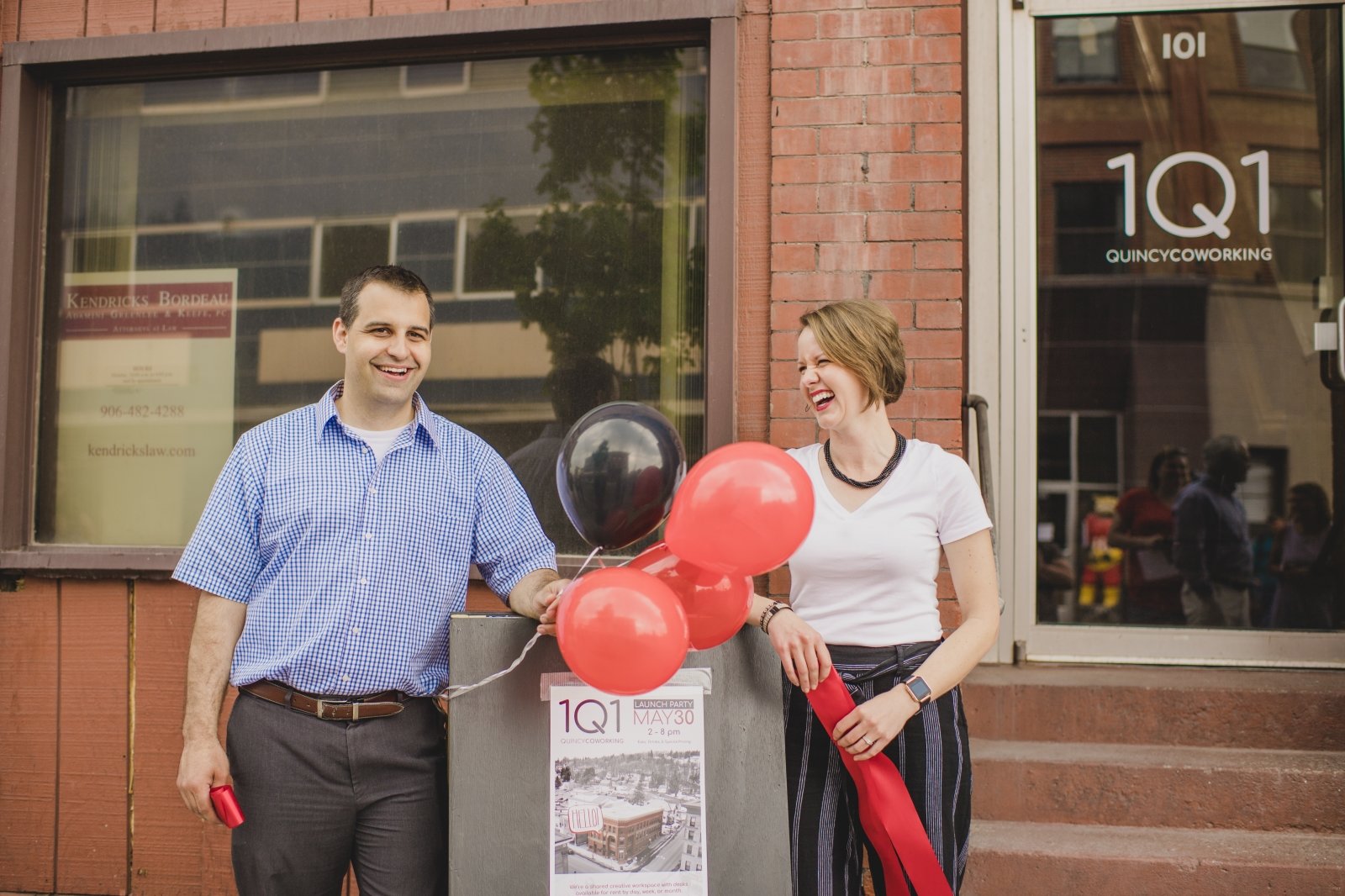Professor Takes a Journey on Streetcars Past

Photos reprinted with permission from Copper Country Streetcars by William J. Sproule. Book available from the publisher online at www.arcadiapublishing.com or 888-313-2665
Bill Sproule’s expertise in transportation—and a love of history and rail transportation—led to a book on local streetcars, just published.
Sproule was prepping for a presentation on the book at Michigan Tech’s Alumni Reunion when he stopped by to discuss the rewards and challenges of producing a book with some 200 photographs. It’s a labor of love with a serendipitous beginning.
“A former Hancock school teacher and rail enthusiast from Chassell, Jim Alain, passed away last spring. His neighbor knew I was interested in streetcars and wondered if I would like Jim’s collection,” Sproule says. “So one day last summer I received 30 boxes of photos and memorabilia!”
Although only one box was dedicated to the Houghton County streetcars, Sproule says the collection was amazing, and, with the encouragement of Erik Nordberg (University archivist at the time), he wrote Copper Country Streetcars for the Images of Rail series by Arcadia Publishing Company, Charleston, South Carolina.
“The book is dedicated to Jim,” Sproule says.
Sproule’s day job as professor of civil and environmental engineering made for many late nights and weekend work, and the result is an illustrated 126-page journey along the vanished streetcars and lines from long ago.
Service began in 1900 on a line between Houghton and Boston, and in the following year, the line was extended farther north to serve Laurium, Red Jacket (now Calumet) and Wolverine. Over the next few years, a branch line opened to Lake Linden and Hubbell, and the network was completed in 1908, when the section between Wolverine and Mohawk opened. The total system had 27 miles of track and 25 streetcars that operated from early morning to late evening every day of the week. Passengers could board and exit cars on the streets in towns and at stations between towns.
Frenchtown, Franklin, Arcadia, St. Mary’s, Boston, Rhode Island, Osceola, Albion, Wolverine, Allouez, Ahmeek, and Mohawk all had stations, in addition to the urban centers of Houghton, Hancock, Laurium, Red Jacket, Lake Linden and Hubbell.
“The peak annual ridership was in 1909, when over six and a half million passengers rode the streetcars,” Sproule says. “There were over 16,000 riders on an average summer day. It really united the Copper Country’s smaller villages.”
The intercity passenger and freight railroads ran eight to ten trains a day, Sproule says, but the streetcars provided frequent and dependable service between towns on the system. Houghton baseball players could travel to Wolverine for an afternoon game and be back home for dinner.
“People from anywhere could go to Calumet for an event at the Calumet Theatre,” he says. “And they could visit Electric Park.”
Electric Park was an amusement park located between Calumet and Hancock. It was created, like many others around the nation including Coney Island, by the private companies who ran the streetcars, to give people another place to go and attract riders in the evenings and on weekends.
A few surprises popped up as Sproule was researching the book, he says, in addition to the sheer numbers of people who used the streetcars.
“At the beginning of the work, I didn’t know the streetcar used Jasper and Houghton Avenues instead of College Avenue in Houghton,” he says. “The Michigan College of Mines was the end of the line in East Houghton, and the last stop was located just behind today’s Michigan Tech [Van Pelt and Opie] Library.”
Following the copper strike of 1913-14, ridership began to drop as the copper market declined and residents started to move out of the area, Sproule says. After World War I, auto ownership started to grow, and drivers wanted governments to build better roads. This helped hasten the decline. The final streetcar run was in 1932.
Sproule also learned a lot about what it took to make images worthy of publication. “I began with some 300 to 350 and discovered that many did not meet the publisher’s standards,” he says. “My son, PJ, really played a major role in the book, as he helped me crop photos and organize the digital images.”
And, through all the pressures (“Well, where is it?” the publisher asked as the deadline approached), weekend and after-hours work, it was worth it.
“There’s a great satisfaction when you open the box and see all the copies,” he says. “It keeps you going for the next book project.” He has already started that one. It will focus on the local professional hockey scene.
Any words of advice about writing a book?
“My wife would say, ‘Make sure you have at least three-quarters of the work done before you shop around for publishers,’” he says.
“She’s right.”
Michigan Technological University is a public research university founded in 1885 in Houghton, Michigan, and is home to more than 7,000 students from 55 countries around the world. Consistently ranked among the best universities in the country for return on investment, Michigan’s flagship technological university offers more than 120 undergraduate and graduate degree programs in science and technology, engineering, computing, forestry, business and economics, health professions, humanities, mathematics, social sciences, and the arts. The rural campus is situated just miles from Lake Superior in Michigan's Upper Peninsula, offering year-round opportunities for outdoor adventure.




Comments